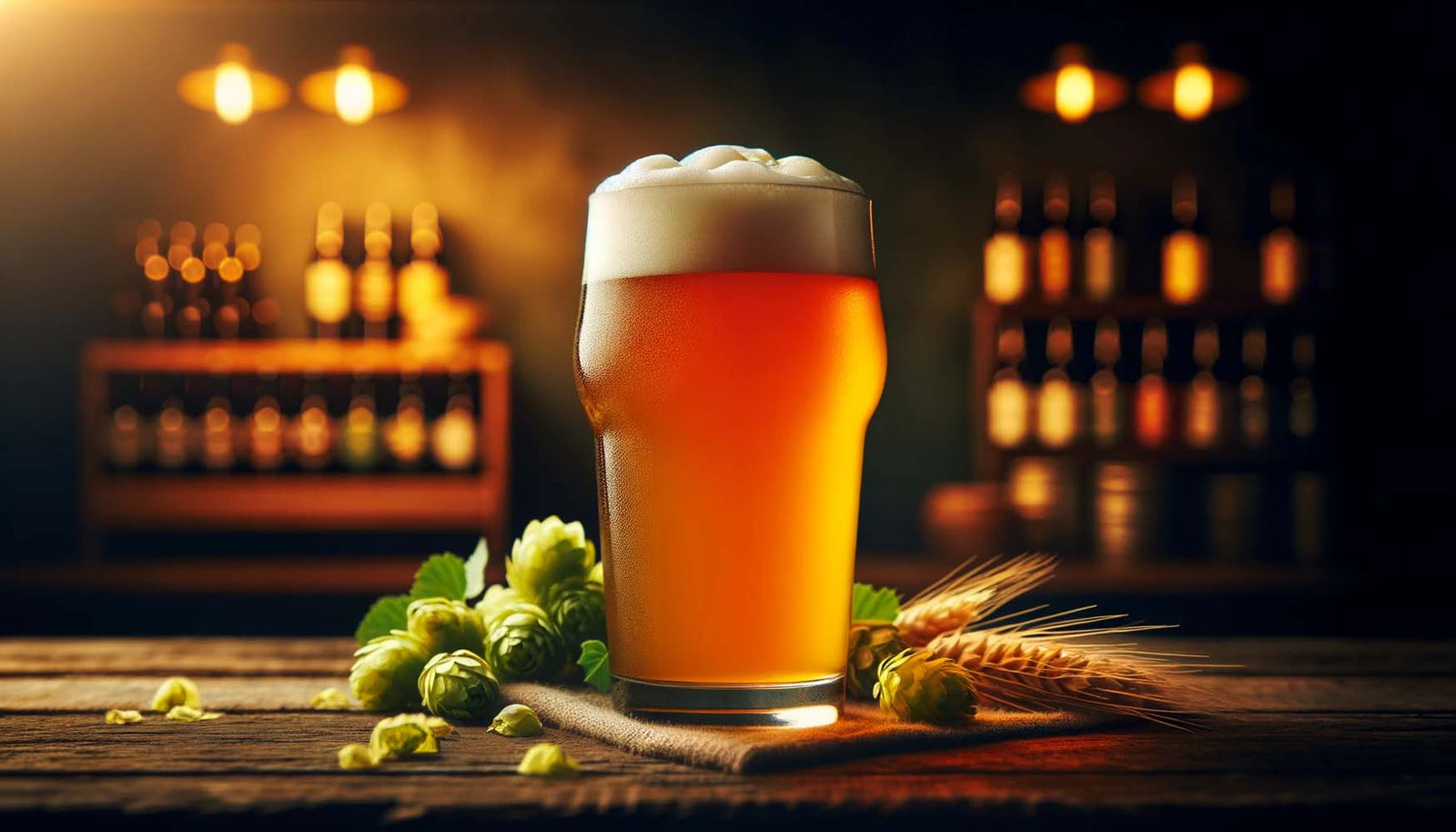🇺🇸No Tariffs. No Hassle.
🇺🇸No Tariffs. No Hassle.

Chasing Ghosts Hazy IPA Review and Recipe
April 01, 2021 3 min read
Every brew day starts with a plan, especially when you have the chance to use a new piece of equipment. You buy your ingredients, you get everything setup and then the light bulb goes off in your head that the batch size isn't going to work for this brewing system. All of sudden you need to increase your batch size to 15 gallons from 10 gallons. Oh what a shame, you'll be getting an extra keg of beer out of this mistake. Well this is what happened to me. At least I had plenty of extra hops, grain (although not exactly what I wanted) and we were using a kveik strain, so a little extra stress wasn't a big deal.
After realizing I didn't have enough Strata and Sultana hops for a 15 gallon batch size, we switched to Citra and Simcoe hops, a classic hop blend for hazy IPAs. I also didn't have enough oat malt and flaked oats, we had some extra wheat on hand which could easily be subbed in.
For this brew day we used the 20 gallon UniBrau Pro V2 equipment with 1 5500 watt element and our wall mounted control panel.
The recipe is as follows.
65% Pale 2 Row
13.5% Malted Oats
13.5% Wheat Malt
4% Carafoam
2.5% Flaked Wheat
1% Flaked Oats
15g CaCl2 in the strike water
Mashed at 65C for 45 minutes, raised to mash out at 76C for 10 minutes and then we sparged with the 4.8 gallons of water held in the jacket of the fermenter which was pre-heated.
No boil hops were used, the wort was whirlpooled and cooled to 80C and our hops were added.
6oz Citra 12% AA
6oz Simcoe 14.2% AA
Fermented with 1 pure pitch pack of Whitelabs WLP 518 Opshaug Kveik, pitched at 40C and fermented at 30C/86F for 4 days
OG 1.066 FG 1.014 6.8%
Dry hops were added at the completion of fermentation at the time of cold crashing.
7.5oz Citra 12% AA
7.5oz Simcoe 14.2% AA
Final packaged volume in corny kegs was 11 gallons and then the beer was carbonated and put in 473ml cans.
Sensory notes:
The appearance is a very opaque hazy orange/yellow that is dense and visually thick.
Aromas of pithy orange and tart grapefruit.
The flavour is smooth and creamy with a bombardment of fresh zesty citrus fruits. Lots of orange notes, with the influx of grapefruit tartness that comes in on the back end to help dry the beer out and almost give the appearance of it having some bitterness.
Hazy IPAs still have a lot of undefined attributes. A lot of it changes based on what's been brewed in the region that you live. Then there's this idea of brewing a "juicy IPA" that isn't hazy, but is packed full of "juicy" hops. Treehouse Brewing and Other Half Brewing could be blamed for this healthy craze for the next big hazy brew that's kind of the same and hopefully kind of different. If it's not thick and opaque and really hazy, please don't call it hazy. As brewers we know processes can change and sometimes in the process of conditioning or god forbid filtering, the haze can disappear. It is a continual learning process and in the end each of us home brewers are trying to brew wicked ass world class brews just like the professionals.
My advice for brewing a hazy IPA is using oat malt, flaked wheat or oats and a low flocculating yeast, I have enjoyed the kveik strains for consistency of the fermentation profile, speed of fermentation and that they are low to medium flocculaters.
More articles how to brew beer
The ultimate guide to Kveik yeast: Unleashing it's fermentation potential
Revolutionizing home brewing: The simplified art of no sparge brewing
Exploring amber ales: A guide with a twist on the traditional recipe
Mastering cold crashing: Enhancing beer clarity and accelerating the aging process
What is the basic function of the fermenter?
What causes a fermenter to heat up?
The art of lagering: A guide to perfecting the cold conditioning process
Troubleshooting fermentation problems in brewing: A comprehensive guide
Subscribe
Sign up to get the latest on sales, new releases and more …

